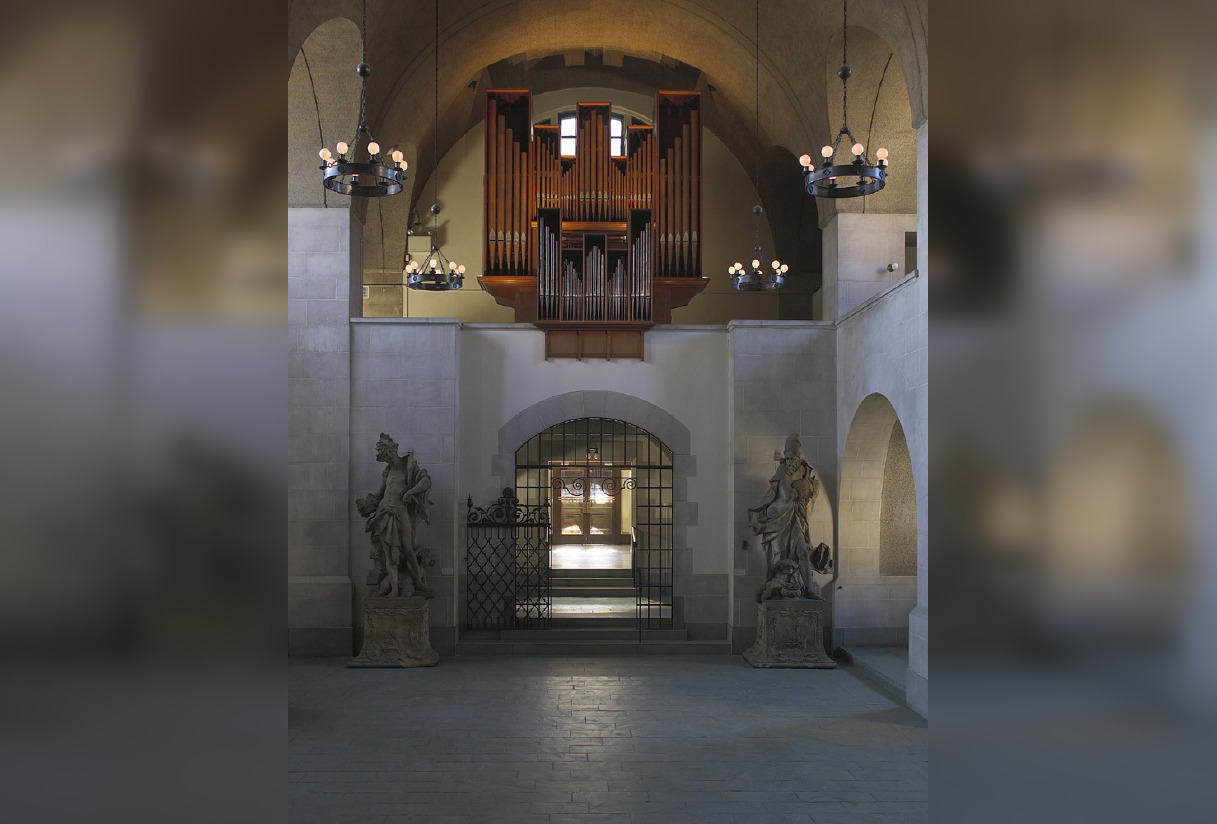
News
Summers Will Not Finish Semester of Teaching as Harvard Investigates Epstein Ties

News
Harvard College Students Report Favoring Divestment from Israel in HUA Survey

News
‘He Should Resign’: Harvard Undergrads Take Hard Line Against Summers Over Epstein Scandal

News
Harvard To Launch New Investigation Into Epstein’s Ties to Summers, Other University Affiliates

News
Harvard Students To Vote on Divestment From Israel in Inaugural HUA Election Survey
A Lunchtime Refuge: Organ Concerts at Adolphus Busch Hall

Students may have heard of Adolphus Busch Hall — a building quite close to Memorial Hall and Sanders Theatre. Others may be familiar with the name through the Harvard Art Museums’s Busch-Reisinger collection, home to the Germanic artworks of the museums.
Few, however, attend the organ recitals which occur every Thursday within the Adolphus Busch Hall. It’s open to the public and free for all — you can even bring your lunch. The recitals are organized by the Harvard Organ Society, and they happen through the months of October and November in the fall and March and April in the Spring. On Oct. 17, Sarah Ku, an eleventh-grader at Groton School, gave a performance in Busch Hall to a small crowd of mostly middle-aged and elderly attendees.
Busch Hall itself has a long history, as does its organ. In 1897 members of what still is the Department of Germanic Languages and Literatures began thinking about constructing a museum on campus that would house Germanic art. Through the donation of Aldophus Busch, this vision became a reality and construction on Busch Hall — designed by architect German Bestelmeyer — began in 1912 and finished in 1917.
Until 1991, when the collection was consolidated within the Harvard Art Museums, Busch Hall contained the works of what we now know as the Busch-Reisinger Museum. In 1937, world-renowned organist E. Power Biggs persuaded the museum to allow the installation of an organ. 20 years later, Biggs once again persuaded them to put in the higher quality organ which still resides in the hall today.
As one enters Busch Hall for an organ recital the first thing to notice is how tranquil the atmosphere is. The main hall — where the organ resides — is minimalist; it consists of varying shades of gray and white stone, and is barren save for some small chairs, various statues and plaster casts. This draws a lot of attention to the light, which pours in from the windows. Yet one of the most prominent visual features of the building is the organ itself, which looms over the main hall.
The program on Oct. 17 consisted of JS Bach’s Toccata and Fugue in F, part of Felix Mendelssohn’s Organ Sonata in B-Flat, and Bach’s Sonata No. 4 in E minor to finish. The concert lasted only 30 minutes — when it finished many audience members stayed back to look around the space, talk to each other, and soak in what they had just heard.
Jennifer Chung, who attended the concert while visiting Boston, said, “It’s very peaceful, especially the setting where you’re at, with the whole architecture. It really goes well with the music that she’s playing.”
Mary Lou Merling, who used to play the organ in her youth, said that the playing was “fantastic.”
“She was so clear, I mean. Every note from every voice — you could hear it with clarity,” she said.
Merling thought Harvard students should be more aware of the weekly organ concerts, saying, “It's free, it’s during lunchtime. It’s a marvelous, marvelous opportunity”.
Kate Judd echoed Merling’s feelings about the concert: “It’s a wonderful, joyful part of the day on Thursday.” Both Merling and Judd had attended many times before — the recitals have created a small community.
John B. Rogers ’26, who helps run the Harvard Organ Society, was at the door handing out brochures before the concert started. He considers it a marvelous opportunity for organ fans to listen to the very same instrument on which many famous recordings were made by E. Power Biggs. Rogers mentioned the wide variety of audience members that attend — locals, as well as visitors like Jennifer Chung.
He says of the recitals that “it’s a wonderful thing because it’s a short, little recital.”
He also praised the setting of the concert: “This building in general is a nice, quiet, almost Epicurean setting within the wider university and I encourage people to come and enjoy it.”
Those who attended the recital seemed to have similar sentiments: Sarah Ku had done a great job, and the weekly organ recitals are a great opportunity for Harvard students to eat and unwind while listening to beautiful music.
Want to keep up with breaking news? Subscribe to our email newsletter.
